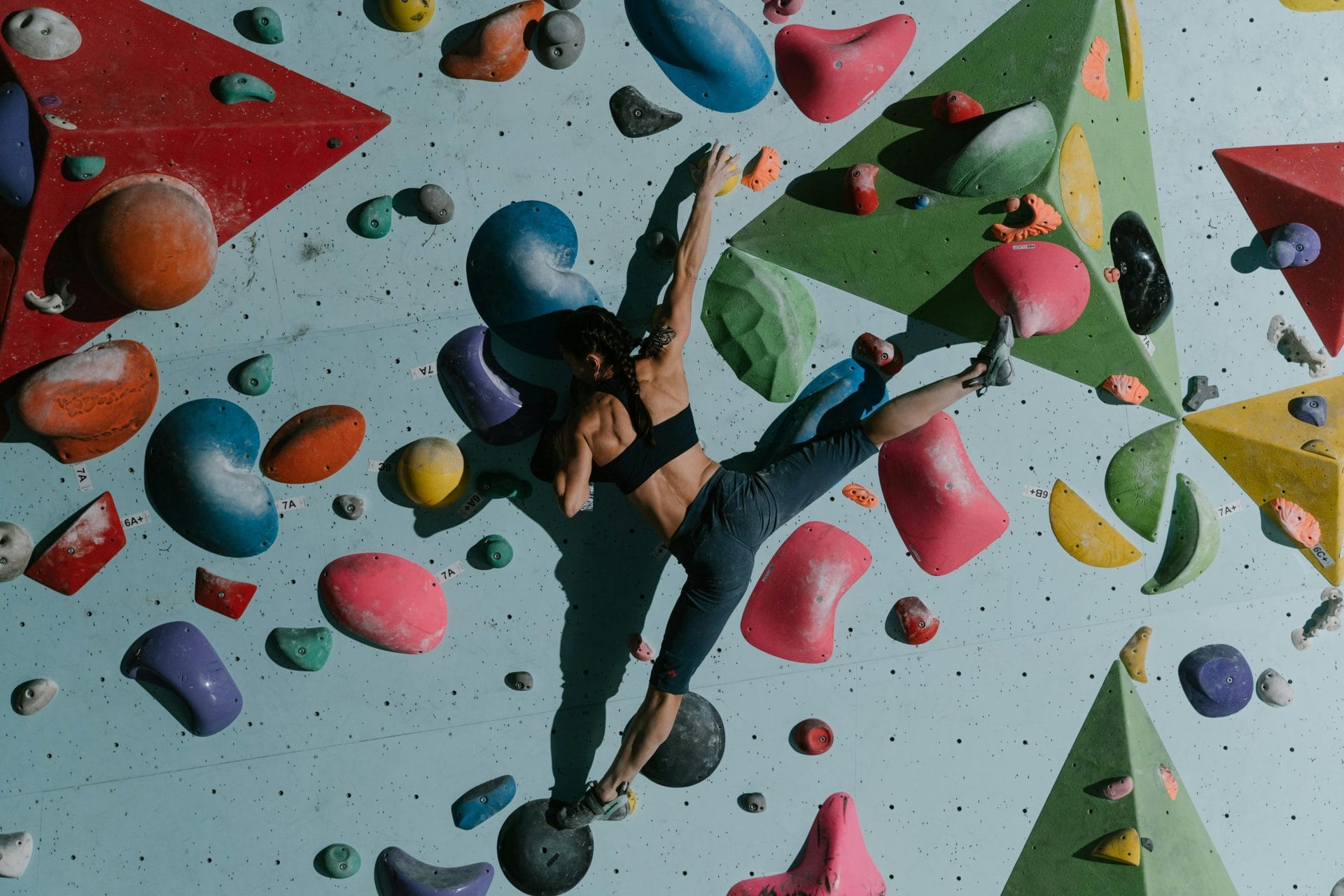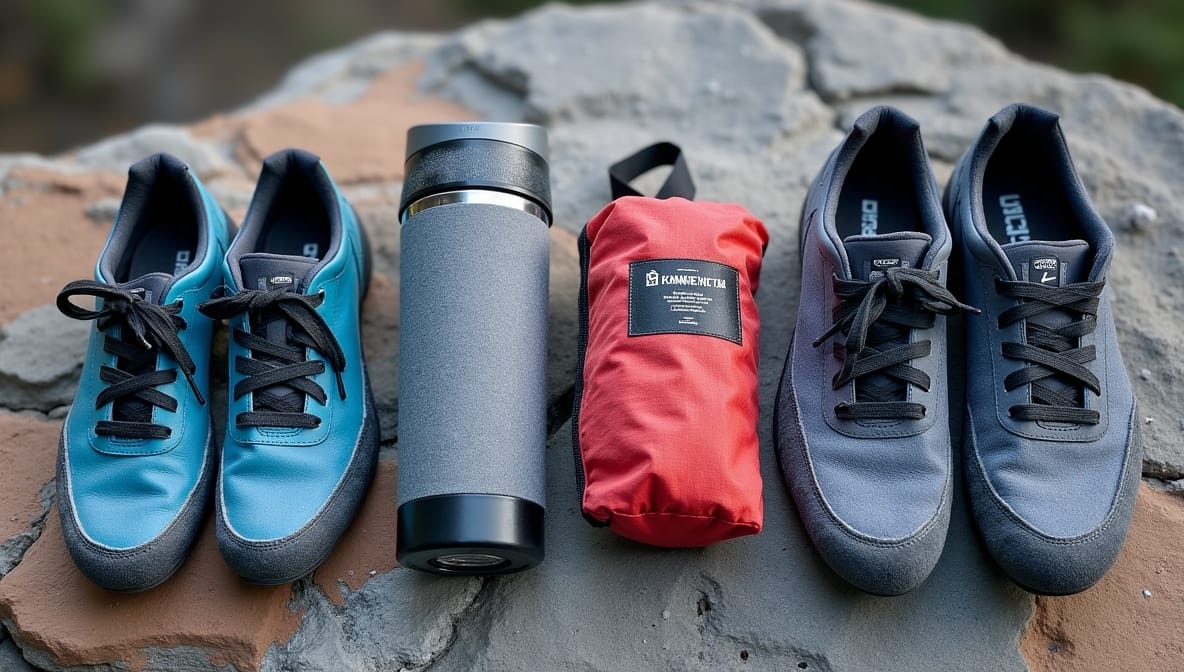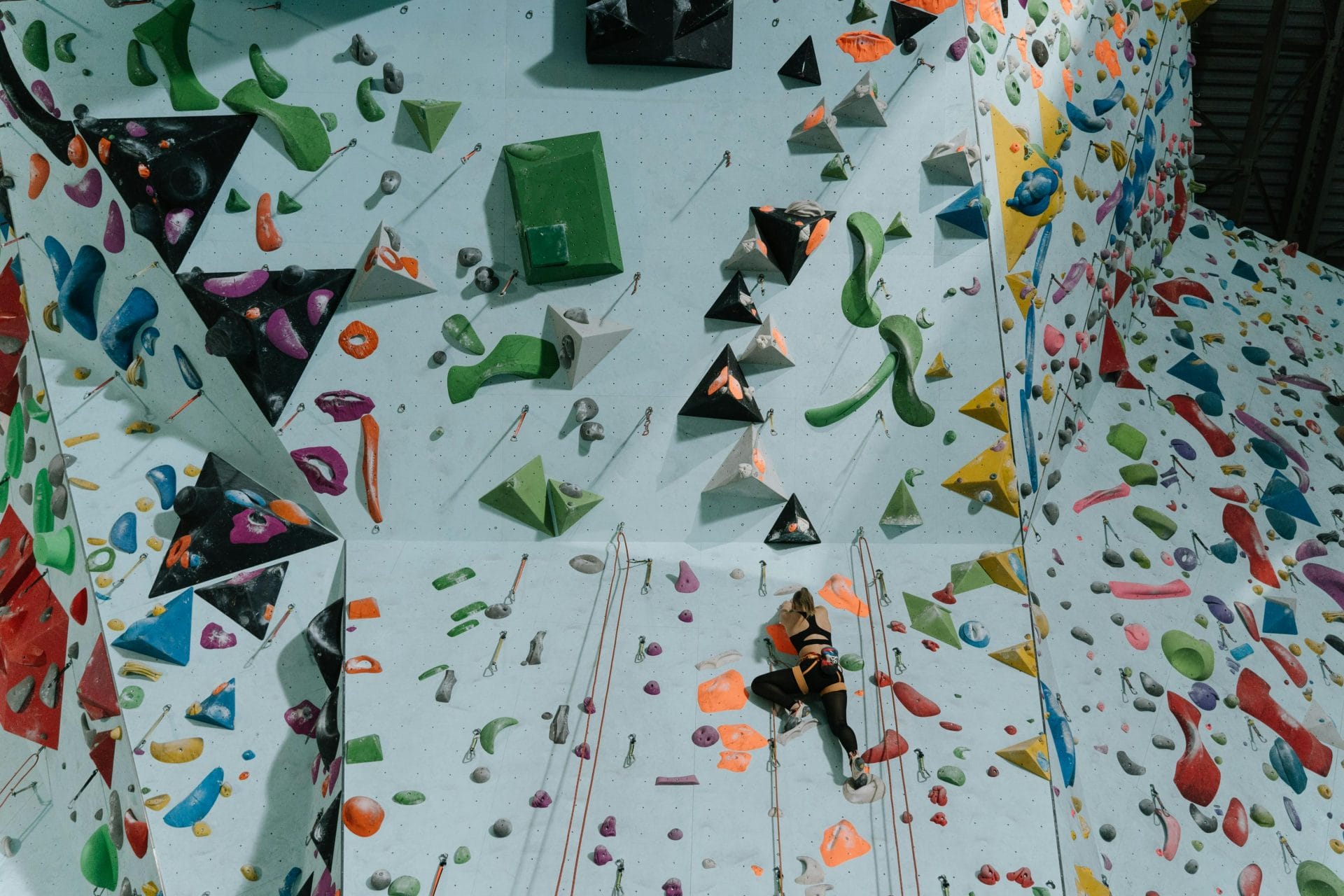Bouldering Etiquette matters—don’t hog routes, brush holds, and respect personal space. Be mindful, share beta if asked, and climb responsibly!
Bouldering isn’t just climbing—it’s knowing when to move, when to wait, and when to speak up. A crowded gym? Don’t hog the wall (one climb, then step aside). Outdoors? Brush off holds, pack out trash. Spotting? Hands near—not on—the climber. And never, ever walk under someone climbing.
Footwork matters, but so does awareness. Chalk spills? Wipe them up. Beta sprays? Only if asked. The unspoken rules keep things smooth (and safe). New to bouldering? Watch how others move, where they stand, when they speak. Good etiquette isn’t complicated. Just respect the space, the climb, and the people. Keep climbing.
Key Takeaway
- Always be courteous to fellow climbers, whether indoors or outside.
- Taking turns and sharing space keeps everyone happy while climbing.
- A good spotter can make all the difference in a safe climbing experience.
Bouldering Gym Etiquette
Bouldering gyms buzz with movement—climbers testing limits, solving problems, learning from falls. Unwritten rules hold it all together.
- Shoes stay clean. Climbing shoes aren’t just footwear; they’re precision tools. Street shoes drag in dirt, making holds slippery. Most gyms ban them on the mats. If you step off for a break, wipe your soles before getting back on.
- Chalk, not cake. Sweaty hands ruin grip, but over-chalking cakes holds, making them slick. A light dusting works best. If you’re leaving white clouds behind, dial it back.
- Wait your turn. If someone’s on the wall, give them space. Standing too close adds pressure. Hovering near the start holds? That’s a silent “I’m next.” A quick nod can confirm it.
- Keep it quiet. Focus matters. Conversations are fine, but keep them low. Loud celebrations feel natural after a tough send, but many climbers prefer a quiet fist bump over a gym-wide cheer.
- Leave no trace. Empty chalk bags, energy bar wrappers, spilled water—clean it up. A tidy gym keeps the mood right.(1)
Outdoor Etiquette
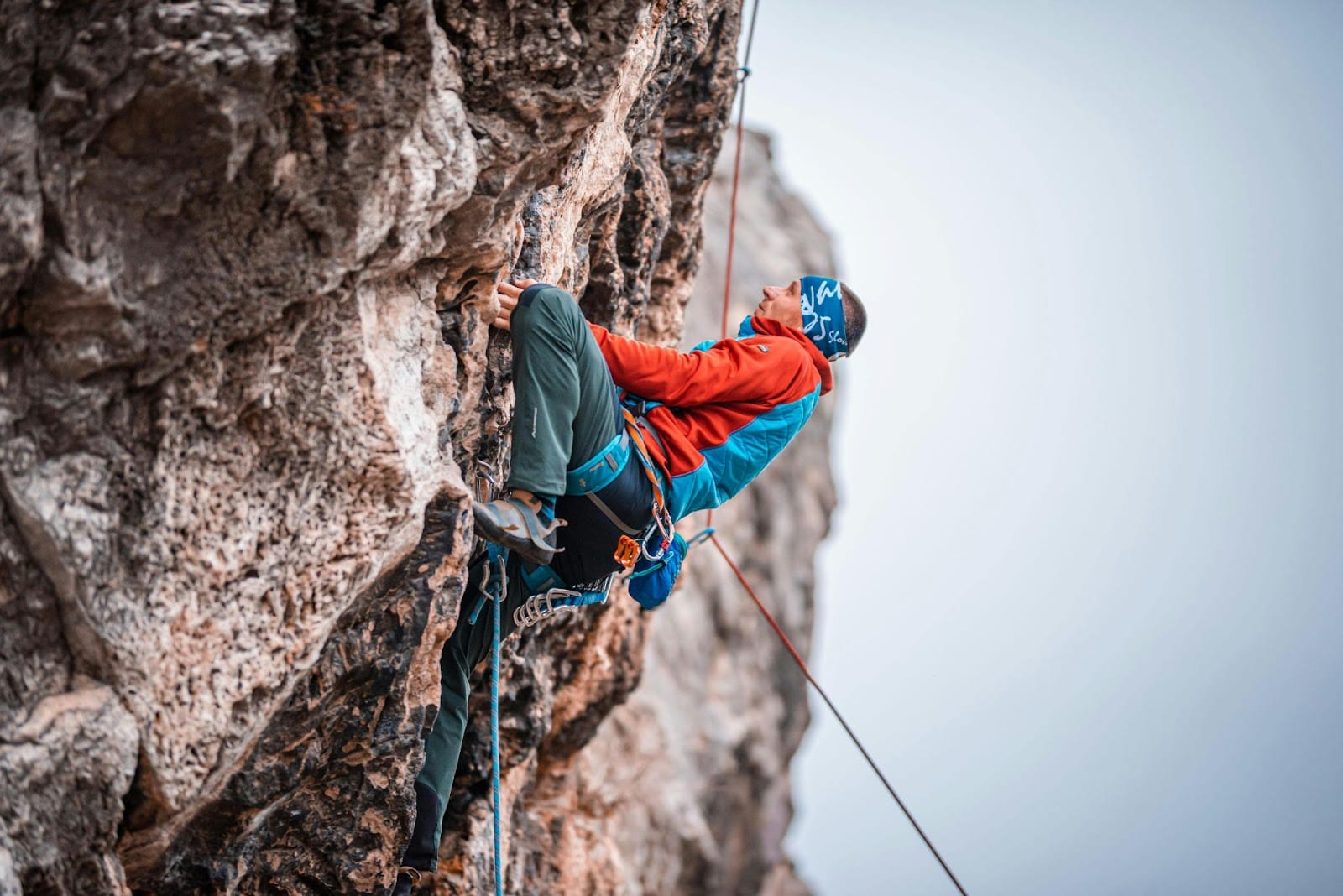
Credits: pexels.com (Photo by Jozef Fehér)
Climbing outside offers a whole new experience, and it comes with its own set of responsibilities. Nature is a gift, and it’s important to treat it with respect. When venturing into the wild, climbers should stick to the designated paths. Creating new paths can damage delicate ecosystems and disturb wildlife.
Packing out what you pack in is a mantra every climber should adopt. That means taking your trash with you when you leave. Sometimes, you might even stumble across litter left by others. If so, picking it up, even if it’s not yours, is a small gesture that keeps nature beautiful for everyone. It’s a bit like being a good neighbor; it just takes a little effort to make a big difference.
When climbing outdoors, climbers might encounter various natural features like trees and rocks. It’s crucial to avoid trampling on these plants. Flora can be fragile, and it takes years for some plants to grow back. By respecting the outdoor areas, climbers can enjoy these stunning environments without causing harm. (2)
Respecting Other Climbers
Bouldering is communal. Encouragement is part of it—climbers cheer each other on. A well-timed “you got this!” can help someone push through a hard move.
Personal space is non-negotiable. Never walk under someone climbing. Falls happen fast, and standing too close can mean serious accidents. Yet, studies show climbers walk under others 15-20% of the time in a session—stay aware.
Climbing styles vary. Some move slow and methodical, others power through with dynamic jumps. Both work. Respecting different techniques keeps the gym welcoming.
Beta (climbing advice) is tricky. Many climbers love discussing moves, but 70% say unsolicited beta (called “spray”) is annoying. If they want help, they’ll ask. Best to let people work problems their own way.
Respect keeps the climbing community strong. Pay attention, be mindful, and let others climb their own climb.
Community Rules
Credits : Beor Ong
Bouldering isn’t just a sport; it’s a community. Each gym or outdoor area has its own vibe. Before climbing, it’s wise to familiarize yourself with local rules. Sometimes there are signs indicating areas where climbing is not allowed. These rules are there for a reason, often to protect wildlife or fragile rock formations.
Being friendly and open to meeting new climbers can enrich your experience. A simple introduction can lead to valuable friendships. You never know when someone might share a tip that helps you climb better or invites you on an outdoor adventure.
In this community, everyone’s learning together. New climbers might feel shy, but they shouldn’t. There is no shame in asking for help or advice. Often, experienced climbers are happy to share their knowledge. Observational studies have shown that bouldering gyms with a strong, explicitly communicated culture of etiquette (through signage, staff intervention, and community events) see higher rates of compliance with community rules. This open environment is what fosters growth and camaraderie among climbers.
Taking Turns on the Wall
A busy bouldering gym hums with movement. Climbers chalk up, study holds, and wait their turn. Sharing space isn’t just polite—it’s essential. If someone lingers near a route, let them climb next. A small gesture, but it keeps things moving.
Timers can help manage turns. A simple rule: three climbs each, then switch. This keeps sessions fair, avoiding “problem-hogging” (repeatedly working one route while others wait). A survey from a climbing forum found that 65% of climbers rank problem-hogging as one of the most frustrating breaches of etiquette.
Good gym culture thrives on mutual respect. Some climbers engage in “the Beta Vacuum”—watching others attempt a problem before trying it themselves. Learning is good, but don’t block others just to spectate. Keep the rotation flowing. Bouldering is hard, but when climbers share the wall, it’s a better experience for everyone.
Spotter Etiquette
Spotting is a vital part of bouldering, and those who take this role seriously play an important safety role. If you’re spotting someone, your job is to keep them safe. Stand close to the climber but don’t get in their way. Your hands should be ready to catch them or guide their fall.
Encouragement is crucial too! While you’re spotting, talk to them. Offer tips and keep their spirits high while they climb. It’s like being their cheerleader! That support can make a big difference in their performance.
It’s also important to be aware of your surroundings. If another climber is on a nearby wall, be cautious of their movements. An anonymous poll found that approximately 40% of climbers have witnessed or experienced a near-miss incident caused by someone landing too close to them or another climber. This statistic underscores how critical proper spotting and awareness are to preventing accidents.
Spotting requires focus, so being aware of what’s happening around you is essential. A good spotter can help prevent injuries, making climbing safer and more enjoyable for everyone.
Respecting Outdoor Areas
Rocks don’t belong to anyone. The land, the plants, the wildlife—they were here first. Climbers should step carefully, avoid trampling vegetation, and keep noise levels down. Outdoor climbing isn’t just about sending problems; it’s about preserving the space.
Some areas are fragile. Signs mark off protected zones for a reason. Many climbing groups hold annual “Outdoor Ethics Day” events, teaching climbers about minimizing impact. These events cover topics like responsible chalk use (excessive chalking damages rock surfaces and looks bad) and proper land stewardship.
Climbing near water? Keep back. Riverbanks and tide pools are home to delicate ecosystems. The less disturbance, the better. Pack out trash, brush off tick marks, and respect closures. Nature gives climbers a playground—it’s up to them to keep it clean.
Gym Behavior
Inside a bouldering gym, behavior matters. It’s easy to get caught up in the climbing excitement, but it’s essential to be considerate of others. Yelling or playing loud music can disrupt the focus of those climbing. Keeping noise levels down creates a better environment for everyone.
The impact of social media has introduced new etiquette challenges in gyms. The desire to film and share bouldering ascents on social media has, in some cases, led to etiquette breaches, such as climbers taking excessively long turns to get the perfect shot or blocking access to problems for extended periods. If you’re filming your climb, be quick and aware of others waiting to use the same route.
Another essential part of gym behavior is keeping gear tidy. No one wants to trip over someone else’s bag or climbing shoes. When you’re done with your gear, put it away. It’s like cleaning up after yourself at home; it shows respect for the shared space.
If something gets broken, let the staff know. They’re there to help, and reporting issues ensures the gym stays safe for everyone. If you keep these behaviors in mind, your time in the gym will be enjoyable, and others will appreciate it too.
Shared Space Practices
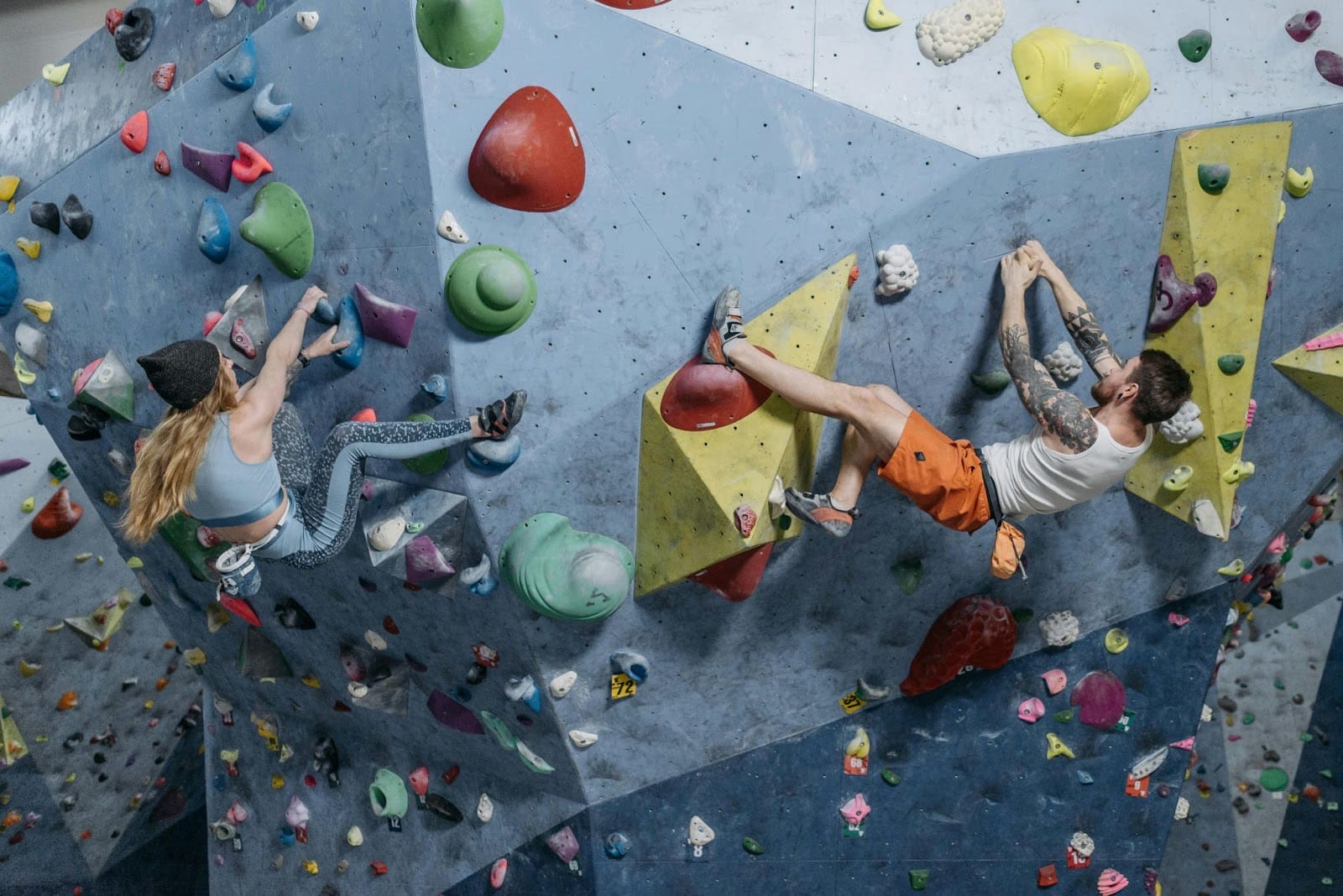
Credits: pexels.com (Photo by Pavel Danilyuk)
Bouldering gyms are busy places, much like a small town filled with climbers. Space can be limited, so being mindful of shared areas is crucial. When you’re not climbing, it’s best to stay away from the walls. This gives others a chance to take their turns without feeling crowded.
If you’re resting, find a spot away from the climbing areas. Sitting on benches or in designated areas helps keep the flow going. By positioning yourself thoughtfully during breaks, you’re helping prevent these potentially dangerous situations while giving others the chance to shine.
Being conscious of shared space allows everyone to enjoy the climbing experience. When climbers show consideration for one another, it creates a friendly atmosphere. That’s what makes bouldering so enjoyable!
General Gym Etiquette
Climbing gyms have their own rhythm. Chalk dust in the air, the soft thud of crash pads, murmured beta exchanges. But every space runs smoother when everyone follows basic etiquette.
- Check the schedule. Some gyms have designated times for youth teams, advanced climbers, or group classes. Nothing kills a session like showing up and realizing half the walls are reserved.
- Start with easier routes. Mastering footwork and body positioning early on makes harder climbs less frustrating. Gym staff might even suggest beginner-friendly problems to build confidence.
- Give climbers space. Walking under someone mid-climb is not just bad manners—it’s dangerous. Studies show experienced climbers respect this rule more, likely because they understand the risks better.
- Respect quiet climbers. A growing trend, “silent sends,” means celebrating with a subtle nod or fist bump instead of loud shouts. It helps maintain focus, especially in packed gyms.
The goal? Keep the space safe, enjoyable, and welcoming—because a good session isn’t just about sending routes. It’s about sharing the wall.
FAQ
What are the key bouldering rules for a safe and respectful climbing gym experience?
Bouldering rules help keep everyone safe and make climbing enjoyable. Follow gym rules like respecting climbers on the wall, maintaining fall zone awareness, and avoiding beta spraying. Good etiquette includes brushing holds after use and being considerate of others waiting for a turn.
Respectful climbing also means following climbing wall etiquette and keeping the mat space clear. Climbing gym safety starts with understanding climbing gym etiquette and being aware of the climbing environment.
How does climbing gym etiquette contribute to the climbing community?
Climbing gym etiquette helps build a strong climbing community by promoting climbing respect, safety, and good etiquette. Following gym rules, respecting climbing gym culture, and maintaining a clean climbing area make the space better for everyone.
Be considerate by not offering unsolicited advice or interfering with problem-solving. Climbing gym behavior impacts the overall climbing gym environment, so practicing climbing awareness and climbing communication makes the experience positive for all climbers.
Why is fall zone awareness important for indoor climbing safety?
Fall zone awareness is a key part of climbing safety, especially in a bouldering gym. The mat space is designed to absorb impact, but climbers must be aware of others to avoid collisions. Indoor climbing requires understanding climbing gym rules and climbing wall etiquette, like not walking under someone mid-climb.
Respect climbers by giving them space, and practice climbing gym awareness to prevent accidents. Bouldering safety starts with being mindful of your climbing environment.
How can I improve my climbing skills while respecting climbing etiquette?
To improve your climbing skills, focus on climbing movement technique, problem-solving, and climbing fitness. Climbing training should be done with respect for others—avoid beta spraying unless asked, and offer climbing advice etiquette rather than unsolicited advice.
Climbing gym training is a great way to work on climbing skill improvement, but always follow climbing gym tips to ensure respectful climbing. Good etiquette means balancing your climbing goals with consideration for the climbing gym community.
What should I know about climbing holds and brushing them after a climbing session?
Brushing holds is part of respectful climbing behavior. Climbing holds collect chalk and sweat, making them slippery for the next person. A climbing brush helps maintain the climbing gym environment and supports the climbing gym community. After a climbing session, brushing holds improves climbing progress for everyone.
Good etiquette includes keeping the climbing area clean and being considerate of others by leaving holds in good condition for the next climber.
Conclusion
Bouldering works best when climbers respect the space, the climb, and each other. No one likes a crowded gym with tangled crash pads or a crag littered with chalky handprints. Brush holds, share beta only when asked, and wait your turn (no one enjoys being climbed over). Outdoors? Pack out everything. Indoors? Keep voices low.
Small things, but they add up. A good session isn’t just about sending—it’s about keeping the sport safe, fun, and welcoming. Climb smart. Climb together.
References
- https://frictionlabs.com/blog/what-is-good-climbing-gym-etiquette
- https://www.transa.ch/en/blog/climbing/outdoor-bouldering-what-you-need-to-know/

